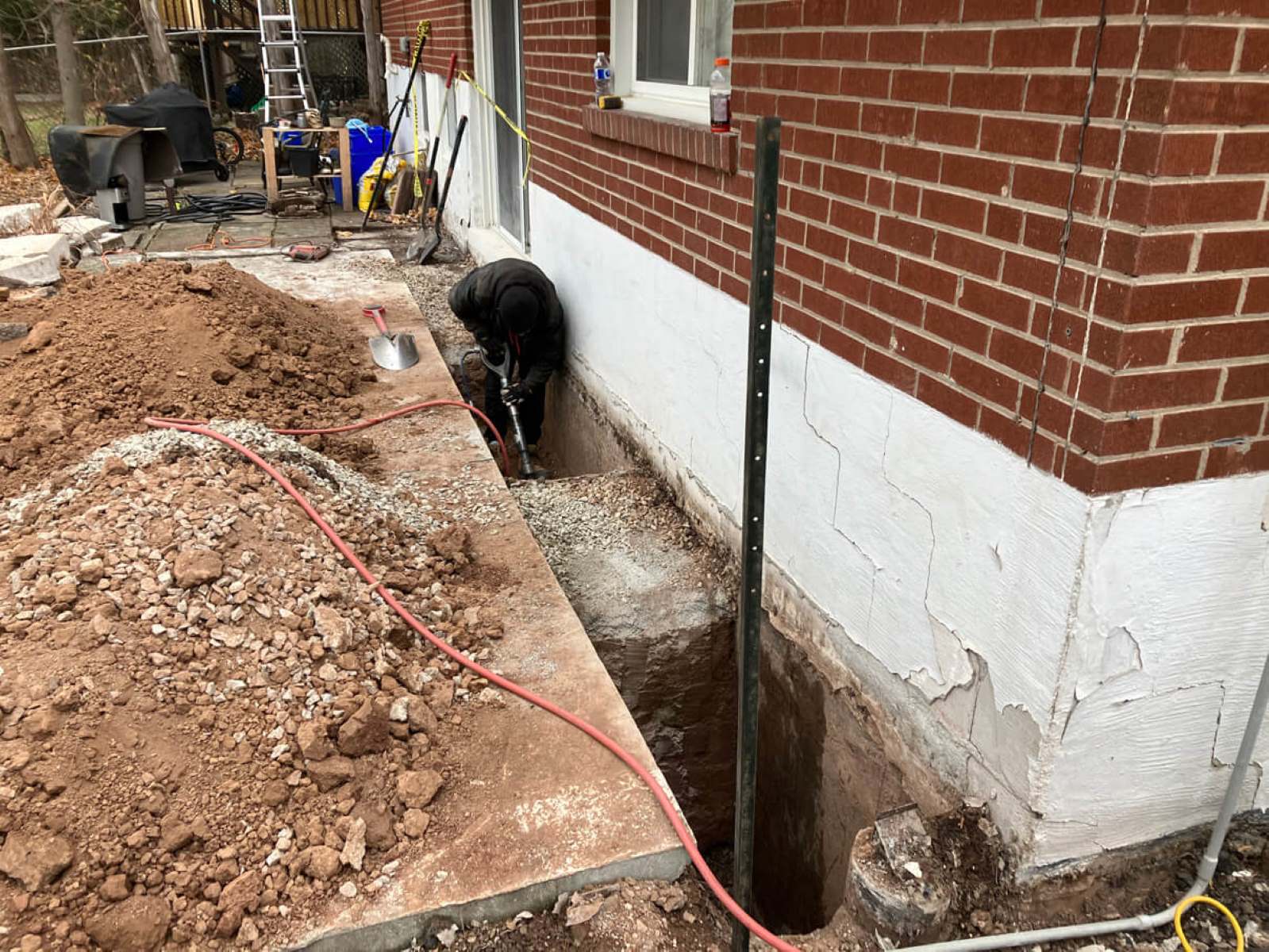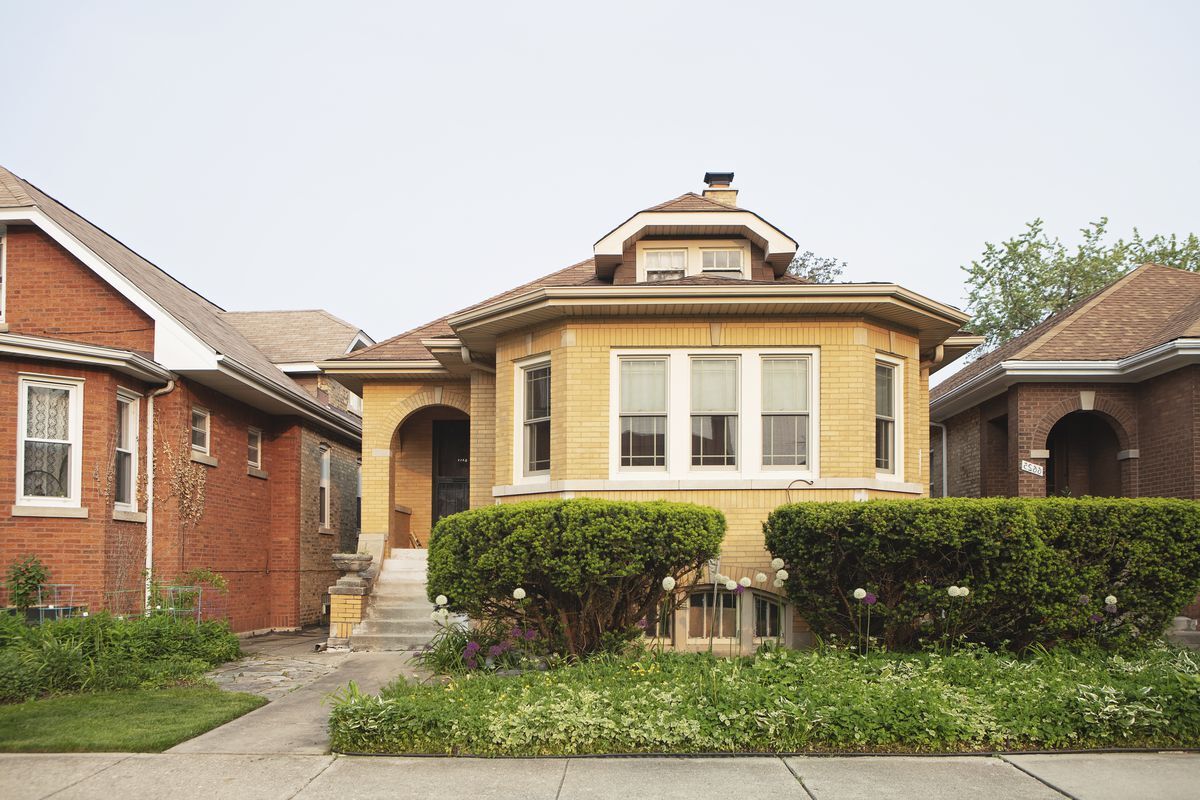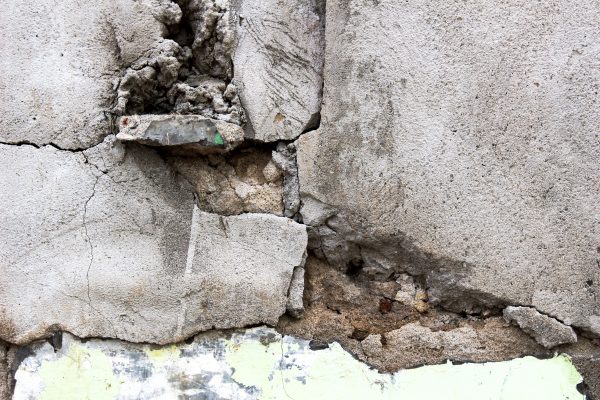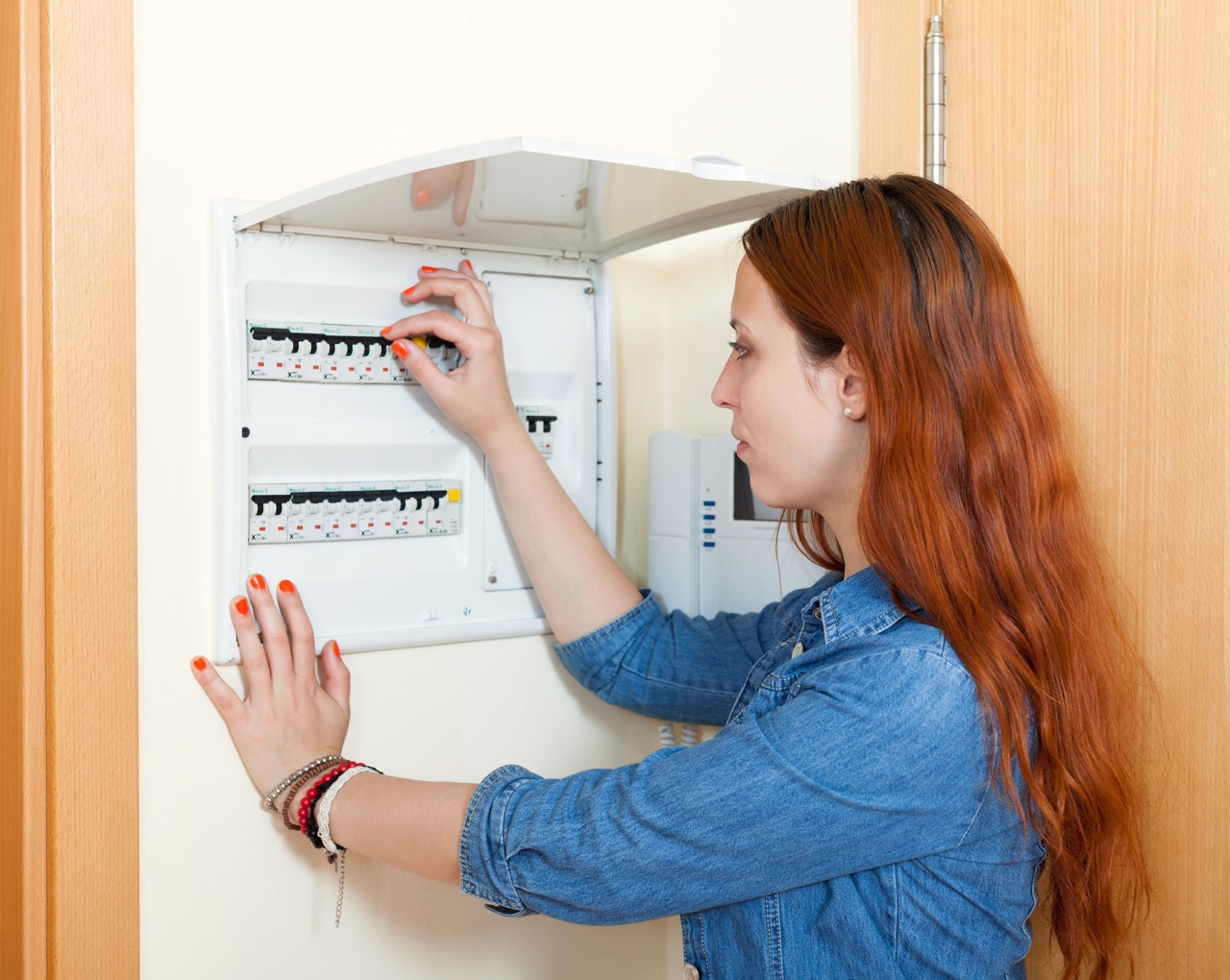Home>Ideas and Tips>Understanding Your Home’s Foundation: Signs Of Problems


Ideas and Tips
Understanding Your Home’s Foundation: Signs Of Problems
Modified: October 20, 2024
Learn to identify signs of foundation problems in your home to prevent costly repairs and maintain structural integrity. Early detection is key!
(Many of the links in this article redirect to a specific reviewed product. Your purchase of these products through affiliate links helps to generate commission for Storables.com, at no extra cost. Learn more)
As a homeowner, it is crucial to understand the importance of maintaining your home's foundation. The foundation of your house is its bedrock, literally and figuratively. It provides the structural integrity that keeps your home standing and safe. However, like any other part of your home, the foundation can develop issues over time. Recognizing these signs early on is essential for preventing costly repairs and ensuring the long-term stability of your home.
Your home's foundation is the base upon which everything else is built. It supports the weight of your house and distributes it evenly across the ground. A healthy foundation ensures that your home remains stable and secure, protecting you and your family from potential hazards like structural collapse or water damage.
A well-maintained foundation is critical for maintaining the structural integrity of your home. When the foundation is sound, it provides a solid base for the walls, floors, and roof. This stability prevents sagging floors, uneven walls, and other cosmetic issues that can make your home look old and worn out.
A damaged foundation poses significant safety risks. For instance, if the foundation shifts or cracks, it can cause doors and windows to become misaligned or even jammed. This can lead to accidents when trying to open or close them. Moreover, a compromised foundation can allow water to seep into your home, leading to mold growth and potential health hazards.
The condition of your home's foundation directly affects its value. A well-maintained foundation can increase the value of your property by ensuring that it remains safe and structurally sound. On the other hand, neglecting foundation issues can lead to costly repairs down the line, which might deter potential buyers if you decide to sell.
Identifying signs of foundation problems early is key to preventing further damage. Here are some common indicators that you might need to inspect your home's foundation:
One of the most visible signs of foundation issues is the presence of cracks in the walls and floors. While small, hairline cracks might be a natural result of settling, large gaps or zigzag cracks can indicate serious foundation problems. These cracks are typically found in areas where the foundation may be under excessive stress, such as the corners of doors and windows or running across floors and up walls.
Cracks in exterior walls are almost always a sign of foundation issues. Your brick siding can become uneven as the soil shifts under the house and the home adjusts. These cracks can be diagonal or horizontal and may indicate that your foundation is settling unevenly.
Interior walls can also show signs of foundation problems through cracks. These cracks might be accompanied by other symptoms like uneven floors or sticking doors and windows.
Floors that slope or have uneven surfaces can indicate serious foundation issues. Use a level to check for noticeable slopes or observe for any abrupt changes. Significant settling in parts of the foundation, often due to varying soil conditions, can cause these issues.
If the floors of your home feel unusually springy, it might be a sign of more severe foundational or moisture-related issues. Bouncy floors can indicate that your foundation is shifting or settling unevenly.
Doors and windows that stick or fail to close properly often point to foundation shifting. This misalignment, resulting from an uneven foundation, can warp frames and make doors and windows difficult to operate.
Sticky doors can sometimes be caused by humidity. However, if there isn’t any humidity in your area and your doors consistently stick for no apparent reason, it could be that your foundation is shifting. This happens as the foundation moves and the door or window frame twists out of balance.
Going off “sticking doors,” when your window and door frames twist out of balance as your foundation shifts, this can cause cracks in the frames. These cracks might be diagonal or horizontal and can be a clear indication of underlying foundation problems.
Visible gaps at the junctions of walls with ceilings or floors are strong indicators of foundation issues. Such separation typically occurs when the home’s structure shifts due to foundation movement, necessitating immediate attention.
When exterior walls start to detach from a building, it’s a severe sign of foundation distress. Noticeable gaps or outward bulging of walls suggest significant foundation shifts that require urgent professional evaluation.
Water often triggers foundation problems by causing the soil to expand and contract, exerting pressure on the foundation. Signs include pooling water or shifting soil around the foundation. Implementing proper drainage and waterproofing is essential to protect the foundation.
Persistent puddles near the house foundation are an indicator of poor drainage and may signal underlying foundation concerns. Excessive moisture in this area can lead to serious problems, emphasizing the need for regular maintenance and vigilance.
If expansion joints in your home start to fail, this could signal a serious issue with the foundation. These joints are designed to accommodate shifts and movements within the building without causing damage.
If you’ve experienced multiple occurrences of nails popping out of your drywall, it may indicate movement within the structure, which could be caused by foundational shifts. This symptom often accompanies other signs like uneven floors or sticking doors.
While the above signs are common indicators of potential problems, there are several other symptoms you should look out for:
Cracks in tile, especially diagonal ones wider at one end, may indicate underlying foundation issues. Additionally, cracks in the grout lines and uneven or loose tiles can point to foundation settling.
If there is evidence of rotten wood in a pier and beam home, this might be a sign of more severe foundational or moisture-related issues. Rotten wood can weaken the structural integrity of your home significantly.
Every homeowner has to deal with their fair share of pests on occasion. If your home seems to have a strangely high number of bugs, it could be a sign that there are cracks in your foundation. Centipedes, pill bugs, earwigs, carpenter ants, and roaches are drawn to damper areas and will usually make their way into your house through foundation cracks.
An excessive buildup of moisture on pipes can indicate foundation issues. Assess plumbing pipes for leaks. If you notice your plumbing is leaking, it’s a great idea to have your foundation inspected by a professional.
Inspecting your home for potential foundation damage is crucial for early detection and prevention of costly repairs. Here’s how you can do it:
If your home includes a crawl space, monitor this area for any signs of mold or moisture buildup. This can cause rot and weaken your home’s foundation.
Regularly open and close windows and doors to see if there’s any difficulty. If you can’t open them or they jam shut, your foundation might have moved.
Just a simple walk around the inside of your home can highlight any foundation issues that you might not have been aware of previously. Look out for uneven floorboards, cracks in the walls, loose wallpaper, and signs of dampness. You can even roll a ball along the floor to assess for any uneven patches.
Head outdoors to see if there are any visible signs of foundation implications surrounding your home. Look for pools of water near your home, rot, moisture buildup, and cracks near doors and windows.
Neglecting foundation issues can present more problems than you might initially think. Here are some consequences of ignoring foundation damage:
Foundation failure can devastate exterior walls, basement walls, and other areas of your home. This can lead to significant structural issues that require a lot of time, hassle, and money to solve.
Ignoring foundation issues can lead to water accumulation proximal to the foundation. Excessive moisture in this area can lead to serious problems like mold growth and structural damage.
One of the biggest factors that can affect a home’s value is its condition. Homeowners who neglect foundation issues may find that their property value decreases significantly over time.
A home should be a relaxing haven, but sagging floors and foundation failure won’t make you feel at ease indoors. This can affect your way of life and general comfort in your home.
Repairing foundation damage early on has numerous benefits:
Significant structural issues require a lot of time, hassle, and money to solve. But making the repairs early on can restore your home back to its original condition without the need for extensive renovations later on.
One of the biggest factors that can affect a home’s value is its condition. Homeowners who consider amending any damages will not only increase their chances of a sale but also the value of their property.
A home should be a relaxing haven, but sagging floors and foundation failure won’t make you feel at ease indoors. Managing these issues now can eliminate any significant stress and allow you to have that homely feeling.
Many costly repairs are waiting around the corner if you refuse to take action now. One serious problem is ill-working plumbing and potential flooding issues in the basement. Other problems can then arise from this, such as wet furniture and structural damage.
Your best bet is to regularly inspect your home for any telltale signs of structural damage. If you notice any of the above warning signs or something you’re unsure about, contact a foundation repair expert to be safe.
A team of experts will use the most suitable method to make any amendments. This might include slab jacking, mud jacking, using concrete piling, polyurethane foam, or other techniques to properly secure your home’s foundation.
Slab jacking involves pumping a mixture of cement and water under the slab to lift it back into place. This method is effective for minor settling issues but may not be suitable for more extensive damage.
Mud jacking involves pumping a mixture of mud and water under the slab to lift it back into place. This method is similar to slab jacking but uses a different material.
Concrete piling involves installing new concrete piers under your home’s foundation to provide additional support. This method is often used when there is significant damage or when other methods are not effective.
Polyurethane foam injection involves injecting foam into cracks and voids under your home’s foundation to fill them up and stabilize the structure. This method is non-invasive and can be effective for minor issues.
Understanding your home's foundation is crucial for maintaining its structural integrity and ensuring long-term stability. Recognizing signs of foundation problems early on allows you to take proactive measures before they escalate into costly repairs. By knowing what to look for—cracks in walls and floors, uneven floors, sticking doors and windows—and how to inspect for damage—you can protect your investment and keep your home safe and comfortable.
Remember that prevention is key when it comes to maintaining a healthy foundation. Regular inspections combined with timely repairs can save you from significant stress and financial burdens down the line. Always consult professionals if you're unsure about any signs or symptoms you observe in your home's foundation. With proper care and attention, you can ensure that your home remains a safe haven for years to come.
Was this page helpful?
At Storables.com, we guarantee accurate and reliable information. Our content, validated by Expert Board Contributors, is crafted following stringent Editorial Policies. We're committed to providing you with well-researched, expert-backed insights for all your informational needs.

















0 thoughts on “Understanding Your Home’s Foundation: Signs Of Problems”